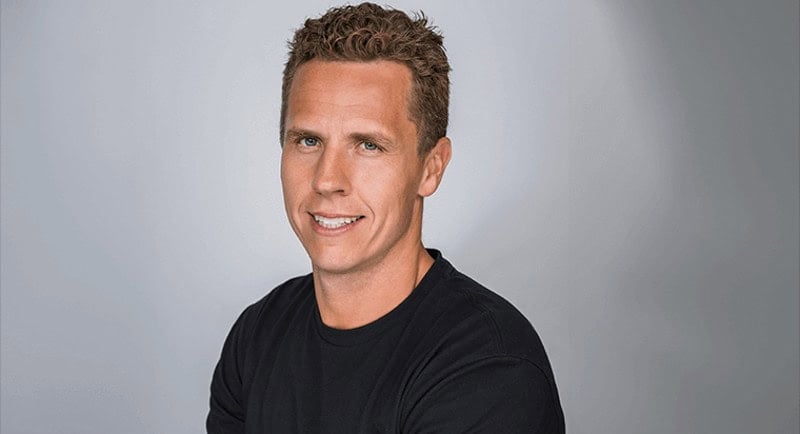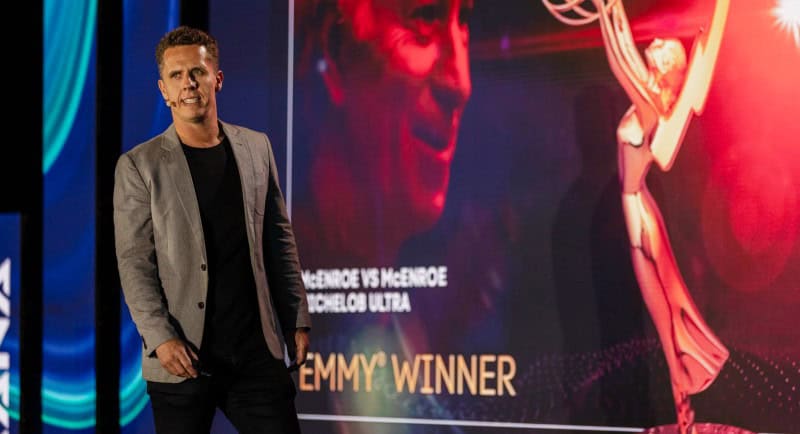“If you’re gonna be a brand-led organisation, marketing has to be in the cockpit, flying the plane,” said Richard Oppy.
According to the Melbourne native, the key to achieving cut-through, consecutive-Cannes-Lions-winning marketing success is ensuring that “creativity is at the centre of the strategy.”
Now based in New York, Oppy is the vice president of global brands at AB InBev – a company that, through a string of mergers and acquisitions, has grown to become the largest brewer in the world, tabling brand buys including Stella Artois through the Interbrew acquisition in 2004, Budweiser through the Anheuser Busch acquisition in 2008, and Corona with the Modelo acquisition in 2012.
In 2016, AB InBev acquired its leading competitor, SAB Miller, bringing its brand portfolio to over 500. Today, the company represents one in every four beers sold worldwide.
However, at AANA RESET, Oppy argued the decision to move beyond its M&A laurels to focus on creativity and brand building has been key to its success.
See also: AANA RESET recap: LEGO, Matildas, Barbie, AB InBev
He described the company’s annual Global Marketing Leadership Team meeting in 2017: “We were having this robust debate about: what did we want to stand for as a marketing team? What was our legacy going to be?
“After a big debate, we had a big dream, and we were all aligned that we wanted to be the best brand builders in the world.
“It was time for marketing to step up to jump in that cockpit to start flying the plane.”

Oppy
He identified the existential challenge AB InBev was facing at the time: “We talked about, as marketers, the importance of art and science. We were really good at the science; we were good at the numbers, the data, the analytics. We could have consumer insights. But we weren’t great at the art, that’s where we really lacked the voltage, the creativity to solve these problems.”
Ever since, AB InBev’s overarching brand goal to “be the best brand builders in the world” has been structurally supported by a number of innovations, including its matrix of annually reviewed agencies the company dubs ‘The Justice League.’
“We like to think of this Justice League as part of our family – an extension of our team,” he said, stressing the importance of nurturing agency relationships.
“I hate when the client takes all the credit for the work when the agency comes up with a great creative solution… At the same time, I hate when things aren’t going well, and the client throws the agency under the bus and says they’re not good enough, they can’t crack the brief.
“So for us, we like to treat our agencies as part of our family. And we like to treat it more like a marriage knowing there’s going to be ups and down. We work through that together.”
Another integral part of AB InBev’s creative architecture is the system ‘Creative X’ which features a universal language termed the “creative spectrum”, ranging from one, “reckless”, to two, “unclear”, all the way up to ten, “legendary”.
Its marketing academy program, servicing over 50 countries, also includes a creativity chapter that outlines best practices for briefing and critiquing, as Oppy explained, “to give our agency partners the freedom of a tight brief.”
“I think sometimes we can get a bit lazy and go to our agency and get them to try and work out what the job to be done is and solve the problem as well.
“The briefing always sounds simple and easy, but I think as marketers, that’s one of our most important jobs: to be laser sharp on what is the problem we’re trying to solve? What is the job to be done?”
He said internal competition has fostered a creative culture. Its in-house ‘X Awards’ – a “mini Cannes” – has recognised some of its most publicly commended work.
The proof is in the proverbial brand pudding. Over the past two years, AB InBev has met all key performance metrics of “best brand builders” based on recognition, effectiveness, and ranking with the World Advertising Research Council (WARC).
The company has been recognised as Cannes’ Creative Marketers of the Year for two consecutive years for work including Extra Lime for Corona, McEnroe vs. McEnroe for Michelob ULTRA, and Bring Home the Bud which went viral for Bud Light during the 2022 FIFA World Cup in Qatar.
Corona Extra Lime
“This one’s about solving a real problem,” said Oppy.
“Corona is one of the most loved brands, not just in Australia, but in the world. And one of the ways we differentiate this brand is with the lime ritual. Every time you put that lime in the bottle, it gives you that feeling of being transported to paradise.”
China is the world’s largest consumer of beer and the biggest market for Corona globally. The lime ritual there had been driven by the import of high-quality Tahitian limes. However, due to COVID-19, access to these limes became difficult.
“They [didn’t] have any good limes, and no beer ad is going to solve that,” said Oppy.
“That’s where we had to … work with our supply partners in China, then work with the local farmers, to become a lime supplier [and] become one of the biggest lime suppliers in the country.”
In partnership with the DAVID Bogotá agency, the Cannes Titanium Lion-winning work drove a 209% expansion of China’s lime yield, 130% increase in lime cultivation area, and 30% rise in lime farmers’ per capita income. China experienced a surge of 2 million limes sold annually.
The work generated $11 million worth of earned media for Corona, 1 billion media impressions, a 17% boost in national brand power, and 29% increase in beer sales in 2022 compared to 2020.
Spontaneous brand awareness also spiked, all with 100% positive or neutral sentiment.
Bring Home the Bud aka ‘Project Lemonade’
In another case study, Oppy explained that given the men’s FIFA World Cup occurs every four years, the AB InBev team typically begins planning around three years in advance.
In 2023, despite Qatar promising organisers it would relax its strict prohibitions around alcohol to allow fans to drink beer at matches and inside fan zones during the World Cup, the country backflipped on the decision just two days out. The call left Budweiser with a warehouse full of unsellable beer, rendering years of marketing and experiential planning defunct.
“We had the team on the ground in Qatar two years out. Two days out, you can imagine all the fridges in the stadium are full of Budweiser,” said Oppy.
He described how “all the signage around the stadiums and outside of the stadiums had Budweiser everywhere as one of the main sponsors, the fan festivals were all set up, we’ve given assurance there’s going to be no problems at all.
“And 48 hours before the first kickoff, we got that phone call from FIFA – who we’ve been partnering with for over 30 years – saying ‘I’m sorry, Budweiser has been banned from the World Cup.’
“We only had 48 hours to respond. We couldn’t cry about it. We’d been dealt lemons. So we kicked off a project straightaway, called ‘Project Lemonade’… We had a small, cross-functional team, the brand team, supply, legal, PR, and we had Wieden+Kennedy, a couple of our key agency partners in the room with us until 4am working out what we were going to do with all that Bud.”
From Project Lemonade came the creative solution to donate all the would-be World Cup beer to whichever country won the tournament, engineering the tidal #BringHometheBud movement.
Working with Wieden+Kennedy New York and Africa São Paulo, the work garnered 25 billion impressions, over 1 million social mentions, and $400 million in earned media. It claimed the number one share of voice, dominating over 70% of all mentions of World Cup sponsors, and secured another Titanium Lion at Cannes Lions 2023.
‘Stay away from politics’
Addressing the elephant in the room, a member of the AANA RESET audience raised a question about the brand lessons surrounding the controversial Bud Light campaign featuring transgender influencer Dylan Mulavney.
“I’m surprised that question came up,” Oppy joked.
“Consumers were very clear to us with this whole case that they don’t want us playing in any politics. They’re like: stick to what you’re good at. Talk about your beer; we love the beer. Talk about sport with NFL, talk about country music, and have fun. That’s been the recipe for the success of this brand. When I’m drinking a beer, I don’t want to be talking politics, particularly in the US where it’s so polarising. So that was the biggest lesson for us, is swim lanes and stay away from politics.”
Still, Oppy maintained the secret sauce to marketing success is to “dream big.”
“It all starts with a big dream,” he said.
“So dream big, because, as you know, it’s the same amount of effort to dream big as it is to dream small.”
See also:
‘There is no cutting corners’: Nic Taylor on LEGO’s craft, care, and fandom
Bernard Salt wants marketers to stop oversimplifying older demos
–
Top image: Oppy
